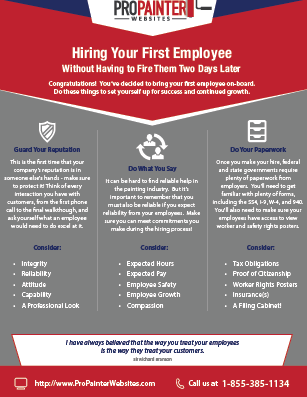Explore The Impact Of Seasonal Elements On The Effectiveness Of Industrial Outside Paint And Recognize The Optimal Times To Achieve Long-Lasting Results For Your Job
Explore The Impact Of Seasonal Elements On The Effectiveness Of Industrial Outside Paint And Recognize The Optimal Times To Achieve Long-Lasting Results For Your Job
Blog Article
Authored By-Korsholm Rodriquez
When you're planning an industrial external paint job, seasonal factors can make or damage your outcomes. You'll wish to take into consideration just how temperature and humidity effect paint application and drying times. Choosing the best period can guarantee your paint sticks effectively and lasts much longer. Yet which seasons are absolutely the best for this type of job? Let's check out the crucial elements that can impact your project's success.
The Influence of Temperature on Paint Application
When you're intending an industrial external paint project, the temperature can dramatically influence exactly how well the paint adheres and dries out.
Ideally, you want to repaint when temperature levels range in between 50 ° F and 85 ° F. If it's too cool, the paint may not treat appropriately, bring about concerns like peeling off or cracking.
On the other side, if it's as well warm, the paint can dry out also promptly, preventing proper attachment and causing an irregular finish.
You need to also consider the time of day; early morning or late afternoon uses cooler temperatures, which can be much more desirable.
Constantly check the producer's recommendations for the certain paint you're utilizing, as they often provide assistance on the excellent temperature level array for optimum outcomes.
Humidity and Its Impact on Drying Times
Temperature isn't the only ecological variable that influences your commercial outside painting project; moisture plays a considerable duty as well. High moisture levels can decrease drying times substantially, impacting the total high quality of your paint work.
When the air is saturated with wetness, the paint takes longer to treat, which can result in problems like inadequate attachment and a greater danger of mold growth. If you're repainting on an especially moist day, be prepared for extended wait times in between coats.
It's crucial to keep track of local weather conditions and plan appropriately. Preferably, https://painternearme21975.aboutyoublog.com/39757877/selecting-the-appropriate-service-provider-for-exterior-business-paint-involves-a-careful-analysis-process for humidity levels between 40% and 70% for optimum drying.
Keeping these consider mind guarantees your job stays on track and supplies a lasting surface.
Best Seasons for Commercial Exterior Painting Projects
What's the best season for your industrial external painting jobs?
Springtime and very early loss are commonly your best choices. Throughout these seasons, temperature levels are moderate, and humidity levels are often lower, developing ideal problems for paint application and drying.
Prevent summertime's intense heat, which can cause paint to completely dry as well swiftly, causing poor adhesion and finish. Similarly, winter season's chilly temperature levels can impede appropriate drying out and treating, running the risk of the long life of your paint task.
Go for days with temperature levels between 50 ° F and 85 ° F for ideal outcomes. parking garage painting in mind to inspect the neighborhood weather report for rainfall, as damp conditions can destroy your task.
Planning around these factors guarantees your painting job runs smoothly and lasts longer.
Conclusion
In conclusion, intending your business external paint jobs around seasonal considerations can make a significant difference in the outcome. By organizing work throughout the suitable temperature levels and moisture levels, you'll guarantee much better adhesion and drying times. Bear in mind to watch on neighborhood weather forecasts and select the right time of year-- spring and very early autumn are your best choices. Taking these actions will certainly aid you accomplish a sturdy and specialist surface that lasts.
